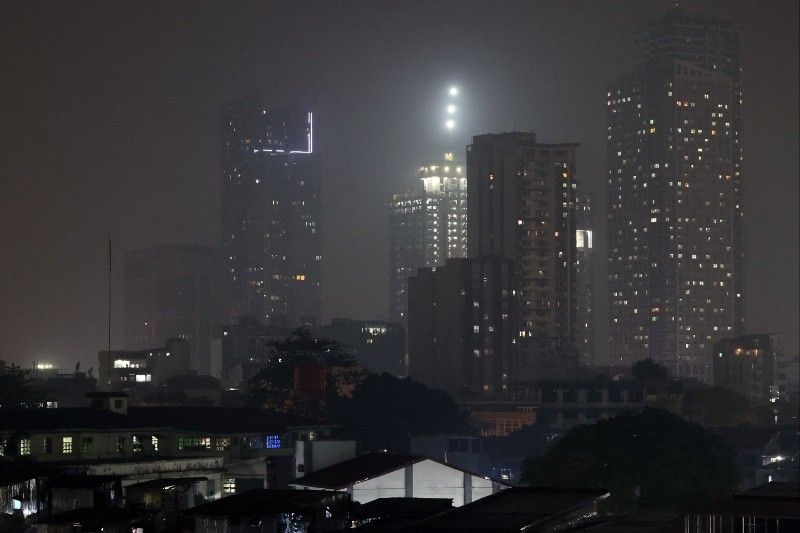BSP unlikely to match Fed’s pause if inflation stays high

MANILA, Philippines — The Philippines’ monetary policy will unlikely match the US Federal Reserve’s move to pause rate action if consumer price growth in the country stays high.
That was the assessment of Bangko Sentral ng Pilipinas Deputy Governor Francisco Dakila Jr. in the Marcos Jr. administration’s economic briefing to Singapore’s business community on Thursday.
“Even if the Fed decides to pause from its policy tightening, which it did this morning, we may not move in complete lockstep if the domestic inflation picture warrants a different response,” he said.
For context, painful inflation has softened after soaring to 14-year highs towards the end of 2022.
The policy rate is now at 6.25% after the BSP hiked it by a total of 425 basis points to arrest brutal price growth.
That said, the BSP slammed the brakes on its aggressive rate hikes in the previous Monetary Board meeting to let the economy feel the lagged impact of expensive borrowing costs.
Dakila said notes from the policy meeting back in May hinted at the BSP’s hawkish tilt.
Hawkishness aside, the central bank’s inflation outlook projects inflation falling back within its 2-4% target range within the final quarter of 2023. That much has been floated by Governor Felipe Medalla, as inflation could land below 4% by October or December, aided by deceleration owing to the sheen of base effects.
The BSP tried its best to rein inflation and investor expectations in 2022 by matching the US Fed’s moves. In July, the central bank called an emergency policy meeting to hike interest rates by 50 basis points to keep inflation in check.
For Domini Velasquez, chief economist at China Banking Corp., the pressure to keep differences between interest rates of the Philippines and the US small will steer policy decisions.
“Given the Fed's recent guidance of possibly 2 more quarter-point hikes, we think the BSP may be forced to hike at least one more time just to maintain sufficient interest rate differentials,” she said in a Viber message.
Velasquez noted that this did not indicate a shift in the decelerating inflation outlook. “Instead, they will likely hike to prevent capital flight and unwarranted depreciation of the peso. We saw this happen last year when the peso depreciated to 59.00 per USD,” she added.
Even then, Velasquez expects the BSP will not preempt a hike ahead of their meeting this month.
Jun Neri, lead economist at the Bank of the Philippine Islands, said the BSP hike could still pull a hike if inflation turns sideways.
“While many are hoping BSP is done hiking, we really can't rule out additional rate hikes should domestic inflation bounce back or if the Federal Reserve hikes some more later this year,” he said in a Viber message.
Softening inflation?
Dakila pointed out in his Thursday morning presentation that easing inflation patterns are beginning to seep into other sectors of the economy.
Consumer price growth has slowed down for the fourth straight month in May pointing to the deft hand of monetary policy to tame inflation. Inflation slowed down to 6.1% in May, slower compared to preceding months but still moved faster compared to the 5.4% recorded a year ago.
Government data in May showed prices of certain commodities, such as food, and services, were easing, but not at a pace that would ease consumer burden. Data from the Philippine Statistics Authority revealed in May, prices of certain food products such as rice, vegetables and milk went down across the country.
Utility costs remain sticky, however, as rent and water posted upticks in May.
Core inflation, computed without volatile items such as fuel, remained high. In May, it amounted to 7.7%, slightly lower compared to the 7.9% tallied in the preceding month. To this end, Neri stood in contrast with Dakila’s view.
“Core inflation remains close to 8% seems to suggest that it hasn't spread much yet and the risk of a rebound still seems high at this point. The declines have been seen mostly in food and energy,” he said.
Economic managers even kept targets unchanged in their meeting last week. Their projections already accounted for risks posed by El Niño, which could drag agriculture production as it has done so before.
A dip in production within the farm sector, as well as persistent supply chain disruptions, could accelerate consumer price growth and chip away at growth. That said, Velasquez agreed with Dakila’s assessment.
“We're seeing inflation now moving to target by October (instead of November). Average inflation will also likely be at a lower 5.5% aligned with BSP's latest projection,” she added.
- Latest
- Trending
































